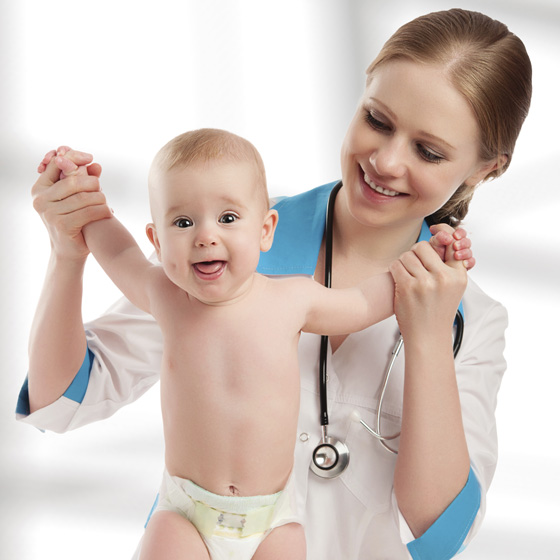Decoding the Biochemical Pathways of Orthodontic Tooth Movement: A Focus on Salivary IL-17A and 1,25-Dihydroxycholecalciferol
Abstract:
Orthodontic treatment leads
to significant alterations in the oral environment, including changes in
salivary biomarker levels. Among these, interleukin-17A (IL-17A) and
1,25-dihydroxycholecalciferol (1,25(OH)₂D₃) play crucial roles in immune
regulation and bone metabolism, respectively. IL-17A is a proinflammatory
cytokine involved in immune responses and bone remodelling, while 1,25(OH)₂D₃,
the active form of vitamin D, influences calcium homeostasis and skeletal
health. Understanding the dynamic interplay between these biomarkers during
orthodontic treatment may provide valuable insights into the biological
mechanisms underlying inflammation and bone remodelling. This review
systematically examines existing literature on the correlation between salivary
IL-17A and 1,25(OH)₂D₃ levels in patients undergoing orthodontic interventions.
By analyzing studies that investigate these biomarkers, this paper aims to
elucidate their role in orthodontic-induced bone remodelling and inflammatory
responses. Identifying potential patterns in their expression may help predict
treatment outcomes and assess patient-specific variations in response to
orthodontic forces. Furthermore, this review highlights the clinical
implications of monitoring salivary IL-17A and 1,25(OH)₂D₃ levels, as
fluctuations in these biomarkers could serve as indicators of treatment
progress and tissue adaptation. A deeper understanding of these biochemical
interactions may contribute to optimizing orthodontic treatment strategies and
developing novel therapeutic approaches to enhance patient care. By bridging
the gap between orthodontics and molecular biology, this review provides a
foundation for future research exploring personalized treatment plans based on
biomarker profiling.
References:
[1].
Phulari, B. S., 2013, History of
Orthodontics. JP Medical Ltd.
[2].
Davidovitch, Z., Krishnan, V., 2009, Role
of basic biological sciences in clinical orthodontics: a case series. Am J
Orthod Dentofacial Orthop, 135:222–31.
[3].
Krishnan, V., Kuijpers-Jagtman, A. M.,
Davidovitch, Z., 2021, Biological Mechanisms of Tooth Movement. John Wiley
& Sons.
[4].
Sagar, S., Ramani, P., Moses, S., Gheena,
S., Selvaraj, J., 2024, Correlation of salivary cytokine IL-17A and 1,25
dihydroxycholecalciferol in patients undergoing orthodontic treatment. Odontology,
112(3):966-975. Doi: 10.1007/s10266-023-00890-1. Epub 2024 Feb 6. PMID:
38319548.
[5].
Sandy, J. R., Farndale, R. W., Meikle, M.
C., 1993, Recent advances in understanding mechanically induced bone remodeling
and their relevance to orthodontic theory and practice. Am J Orthod
Dentofacial Orthop, 103:212–22. https://doi.org/10.1016/0889-5406(93)70002-6
[6].
Krishnan, V., Davidovitch, Z., 1993,
Biological Mechanisms of Tooth Movement. John Wiley & Sons, 2009.
[7].
Ellias, M. F., Zainal Ariffin, S. H.,
Karsani, S. A., Abdul Rahman, M., Senafi, S., Megat Abdul Wahab, R., 2012,
Proteomic analysis of saliva identifies potential biomarkers for orthodontic
tooth movement. Sci World J, https://doi.org/10.1100/2012/647240
[8].
Oppenheim, A., 2007, Tissue changes,
particularly of the bone, incident to tooth movement. Eur J Orthod, 29:
i2–15. https://doi.org/10.1093/ejo/cjl105
[9].
Kaczor-Urbanowicz, K. E., Deutsch, O.,
Zaks, B., Krief, G., Chaushu, S., Palmon, A., 2017, Identification of salivary
protein biomarkers for orthodontically induced inflammatory root resorption. Proteomics
Clin Appl, 11:9-10. https://doi.org/10.1002/prca.201600119
[10]. Grimm,
F. M., 1972, Bone bending, a feature of orthodontic tooth movement. Am J
Orthod, 62:384–93. https://doi.org/10.1016/s0002-9416(72)90278-3
[11]. Schwarz,
A. M., Martin Schwarz, A., 1932, Tissue changes incidental to orthodontic tooth
movement. Int J Orthodont Oral Surg Radiogr, 18:331–52. https://doi.org/10.1016/s0099-6963(32)80074-8
[12]. Kardos,
T. B., Simpson, L. O., 1980, A new periodontal membrane biology based upon
thixotropic concepts. Am J Orthod, 77:508–15.
[13]. Yee, J.
A., Kimmel, D. B., Jee, W. S., 1976, Periodontal ligament cell kinetics
following orthodontic tooth movement. Cell Tissue Kinet, 9:293–302.
[14]. Reitan,
K., 1957, Some factors determining the evaluation of forces in orthodontics. Am
J Orthod, 43:32–45. https://doi.org/10.1016/0002-9416(57)90114-8
[15]. Alhashimi,
N., Frithiof, L., Brudvik, P., Bakhiet, M., 2000, Orthodontic movement induces
high numbers of cells expressing IFN-gamma at mRNA and protein levels. J
Interferon Cytokine Res, 20:7–12. https://doi.org/10.1089/107999000312685
[16]. Alhashimi,
N., Frithiof, L., Brudvik, P., Bakhiet, M., 2001, Orthodontic tooth movement
and de novo synthesis of proinflammatory cytokines. Am J Orthod Dentofacial
Orthop, 119:307–12.
[17]. Simonet,
W. S., Lacey, D. L., Dunstan, C. R., Kelley, M., Chang, M. S., Lüthy, R., et
al., 1997, Osteoprotegerin: a novel secreted protein involved in the regulation
of bone density. Cell, 89:309–19.
[18]. Senthil, R., 2025,
Formation of bone tissue apatite on starch-based nanofiber-capped
nanohydroxyapatite and reduced graphene oxide: a preliminary study. Oral
Maxillofac Surg 29, 6. https://doi.org/10.1007/s10006-024-01303-5
[19]. Gul, S.
S., Abdulkareem, A. A., Sha, A. M., Rawlinson, A., 2020, Diagnostic accuracy of
oral fluids biomarker profile to determine the current and future status of
periodontal and peri-implant diseases. Diagnostics (Basel), 10. https://doi.org/10.3390/diagnostics10100838
[20]. Justino,
A. B., Teixeira, R. R., Peixoto, L. G., Jaramillo, O. L. B., Espindola, F. S.,
2017, Effect of saliva collection methods and oral hygiene on salivary
biomarkers. Scand J Clin Lab Invest, 77:415–422.
[21]. Humphrey, S. P., Williamson, R. T., 2001, A review of saliva: normal
composition, flow, and function. J Prosthet Dent, 85:162–9.
[22]. Bonne, N. J., Wong, D. T. W., 2012, Salivary biomarker development using
genomic, proteomic, and metabolomic approaches. Genome Med, 4:1–12.
[23]. Allen, R. K., Edelmann, A. R., Abdulmajeed, A., Bencharit, S., 2019,
Salivary protein biomarkers associated with orthodontic tooth movement: A
systematic review. Orthod Craniofac Res, 22 Suppl 1:14–20.
[24]. Navarro-Palacios, A., García-López, E., Meza-Rios, A.,
Armendariz-Borunda, J., Sandoval-Rodríguez, A., 2014, Myeloperoxidase enzymatic
activity is increased in patients with different levels of dental crowding
after initial orthodontic activation. Am J Orthod Dentofacial Orthop,
146:92–7.
[25]. Flórez-Moreno, G. A., Isaza-Guzmán, D. M., Tobón-Arroyave, S. I., 2013,
Time-related changes in salivary levels of the osteotropic factors sRANKL and
OPG through orthodontic tooth movement. Am J Orthod Dentofacial Orthop,
143:92–100.
[26]. Tuncer, B. B., Ozmeriç, N., Tuncer, C., Teoman, I., Cakilci, B., Yücel,
A., et al., 2005, Levels of interleukin-8 during tooth movement. Angle
Orthod, 75:631–6.
[27]. Deeksheetha, P., Ramalingam, K., Ramani, P., Jayaraman, S., Akilarooran,
A., 2025, Insulin receptor substrate 1 (IRS 1) serum levels in patients with
oral squamous cell carcinoma. Oral Oncol Rep, 1:100708. https://doi.org/10.1016/j.oor.2024.100708
[28]. Garlet, T. P., Coelho, U., Silva, J. S., Garlet, G. P., 2007, Cytokine
expression pattern in compression and tension sides of the periodontal ligament
during orthodontic tooth movement in humans. Eur J Oral Sci, 115:355–62.https://doi.org/10.1111/j.1600-0722.2007.00469.x
[29]. Harris JJ, Rajasekar A., 2025, Efficacy of
antimicrobial photodynamic therapy (a-PDT) as an adjunct to scaling and root
planing on clinical parameters, oxidative and anti-oxidative profile in the
treatment of chronic periodontitis: a randomized controlled clinical trial. Odontology,
Epub ahead of print. doi: 10.1007/s10266-025-01106-4.
[30]. Kennedy, J., Rossi, D. L., Zurawski, S. M., Vega, F. Jr., Kastelein, R.
A., Wagner, J. L., et al., 1996, Mouse IL-17: a cytokine preferentially
expressed by alpha beta TCR+ CD4-CD8-T cells. J Interferon Cytokine Res.,
16:611–7.
[31]. Taylor, P. R., Roy, S., Leal, S. M. Jr., Sun, Y., Howell, S. J., Cobb,
B. A., et al., 2014, Activation of neutrophils by autocrine IL-17A-IL-17RC
interactions during fungal infection is regulated by IL-6, IL-23, RORγt, and
dectin-2. Nat Immunol, 15:143–51.
[32]. Sagar, S., Ramani, P., Yuwanati, M., Moses, S., Ramalingam, K., 2023,
Role of 1,25-dihydroxycholecalciferol on the acceleration of orthodontic tooth
movement: A systematic review. Int J Orthod Rehabil, 14(4):19–32. https://doi.org/10.56501/intjorthodrehabil.v14i4.877
[33]. Senthil R, Çakır S., 2024. Nano apatite growth on demineralized bone
matrix capped with curcumin and silver nanoparticles: Dental implant mechanical
stability and optimal cell growth analysis. J Oral Biosci.,
66(1):232-240. doi: 10.1016/j.job.2023.12.004.
[34]. Carlberg, C., 2014, Genome-wide view on the physiology of vitamin D. Front
E-books.
[35]. Yetley, E. A., Brulé, D., Cheney, M. C., Davis, C. D., Esslinger, K. A.,
Fischer, P. W. F., et al., 2009, Dietary reference intakes for vitamin D:
Justification for a review of the 1997 values. Am J Clin Nutr,
89:719–27. https://doi.org/10.3945/ajcn.2008.26903
[36]. Liu, K., Meng, H., Hou, J., 2012, Characterization of the
autocrine/paracrine function of vitamin D in human gingival fibroblasts and
periodontal ligament cells. PLoS ONE, 7: e39878. https://doi.org/10.1371/journal.pone.0039878
[37]. Collins, M. K., Sinclair, P. M., 1988, The local use of vitamin D to
increase the rate of orthodontic tooth movement. Am J Orthod Dentofacial
Orthop, 94:278–84.
[38]. Giustina, A., Bilezikian, J. P., 2018, Vitamin D in Clinical Medicine. Karger
Med Sci Publ.
[39]. Alagesan, A., Rajendran, K., Raghavan, V., Tirumalasetty, S.,
Vasanthakumar, V., Reddy, M., 2023, A study of serum vitamin D levels in
COVID-19 patients and its association with severity of the disease.
[40]. Sagar, S., Raman, P., Gheena, S., Abilasha, R., Krishnan, R. P., Selvaraj, J., 2022, Salivary vitamin D levels among OSCC and normal Indian patients. Bioinformation, 18(10):884–7. https://doi.org/10.6026/97320630018884

